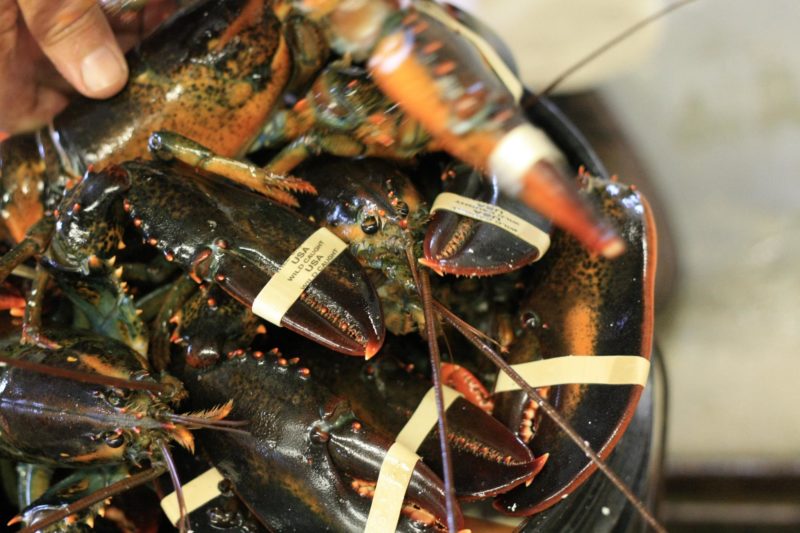Lobster is major to Maine’s economy, worth more than $450 million, where 120 million pounds were harvested in 2018, accounting for 80 percent of all U.S. landings. Things started off slowly in 2019, possibly as a result of the cold spring.
“Typically, in this bay, anything prior to the Fourth of July is an early start — but recent years have been earlier,” says Alex Todd, of Chebeague Island, Maine. Prices were steady and higher than previous years, but catch has been slower. In October, boat prices were around $5/pound for new shell and around $7.50/pound for hard shell.
While final landings were yet to be determined at press time, early speculations show landings dipping by as much as 50 percent.
“We know that landings have been down, but to what extent we won’t know until after the first of the year,” says Jeff Nichols of Maine’s Department of Marine Resources. The state’s DMR Commissioner Pat Keliher said initial reports through September 2019 showed Maine landings stood around 50 million pounds for the year.
One explanation is that 2019’s summer season was defined by low bottom temperatures coastwide and that lobsters molted late. Other factors are bait shortages and the effects of a changing climate.
Meanwhile, exports plunged after China placed heavy tariffs on U.S. lobsters. “Exporters spent 10-plus years building that market, just to have it disappear almost overnight,” says Annie Tselikis, executive director of the Maine Lobster Dealers’ Association.
Competition for live lobster is still high and supply lower in Maine, compared to past years. But, Tselikis adds, the margin in the supply chain is much tighter. “We’re still running the same exact operations with the same overhead, risk, and cost of doing business, while having to also invest in developing new markets or expand existing demand to make up for the loss of the China trade.”
Canadian fishermen and exporters have gained a competitive edge.
“From a boatowner standpoint,” says Todd, “from August on for me has been normal dollar wise, because of higher prices, despite lower catch rates.”
But from Todd’s standpoint as a seller, “We sell mostly to U.S. processors competing with Canadian processors, and the tariff hurt us.” There is speculation that individual lobstermen aren't feeling a major burn, because Canada is buying Maine lobsters before shipping them out as a Canadian product to China.
“There is demand for the product for processing (demand for lobster tails is high right now — has been for about a year -— and there is little product in inventory throughout the region), but we also know that some of that product is going into the live trade,” says Tselikis.
Both exports to China and imports from Canada are down, while U.S. lobster exports to Canada are up. “It is both impact of the tariffs and growth of the market in China that has driven the change in where the product comes from and the size of the market,” says Geoff Irvine of the Lobster Council of Canada.
Third-party data (from U.S. and Canadian government sources) shows the United States has exported less than 2.2 million pounds of lobster to China through June 2019, compared to 12 million pounds last year— an 80 percent drop. Canadian exports of live and frozen lobster have risen dramatically — with exports to China through June already approaching 33 million pounds, which is nearly as much as all of 2018.
“[Tariffs] are a two-year-old story now,” says Brett Taylor, owner of Taylor Lobster in Kittery, Maine. “And in a nutshell, we’ve all been affected in some way.” While Taylor’s company does not ship to mainland China directly, they still feel the impacts of the tariffs indirectly. “Close one large market, now there is more competition for those same sales. There are zero bright sides.”
China is not the only player in Maine’s lobster trade woes, Tselikis points out. “In September 2017, Canada and the European Union began implementing the Comprehensive Economic Trade Agreement, which immediately eliminated an 8 percent tariff on live lobster and began to phase out the 16-20 percent tariffs on various value-added lobster products.” Those tariffs remain on lobster exported from the United States. “Currently, our exports to Europe are down 50 percent from the historical high of $144 million.”
But Tselikis adds, “This industry is incredibly resilient. New markets are being built in the Middle East, Southeast Asia, and domestically. And all of that is happening right now.”







